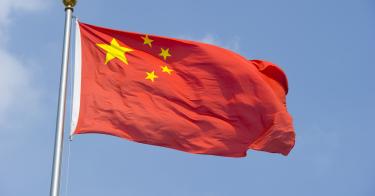In 2012, Beijing launched its 16+1 Initiative, an attempt to expand its business and investment opportunities in 16 countries in Eastern and Central Europe. Billing the initiative as a vehicle for “win-win cooperation and development” by all parties, China prioritized its investment in infrastructure, advanced technologies, and green technologies.
A decade later, the “win-win” expectations have yet to be fulfilled. The initiative has helped China amass greater economic and political influence in the region, but the Europeans have gained little.
It’s time for Europe to jettison the 16+1 and turn toward forums like the Three Seas Initiative, or 3SI, which will bind together likeminded democracies and foster private investment into regional projects that will produce enduring returns.
July’s opening of the Peljesac bridge in Croatia marked a rarity: a Chinese constructed project seen through to completion. Far more typical is the high-speed rail line between Belgrade and Budapest; the original deadline for completion (2018) has been pushed back to 2024. Oh, and it won’t be won’t be a high-speed line, either.
China’s predatory lending practices have left their mark, too. Consider Montenegro’s plan to build a 102-mile road connecting the port of Bar with Belgrade. In 2014, the government signed a $1 billion deal with China’s Exim Bank to fund construction of a 25-mile section of the road, with the China Road and Bridge Corporation as the contractor.
The project devolved into a classic boondoggle. When the stretch finally opened in May, three years behind schedule, it dead-ended in a forest. Meanwhile, the contractors are accused of damaging the environment, and this “road to nowhere” has left Montenegro “saddled with debts to China that totaled more than one-third of the government's annual budget.” The terms of the contract have raised concerns that China could gain control of the port of Bar or other strategic properties, should Montenegro fail to repay the loan.
Despite some high-profile projects, Chinese investment in the region never came close to expectations. In 2021, Eastern and sSuthern Europe saw only 14% of Chinese foreign direct investment in the continent.
Recent Chinese actions make the 16+1 initiative look more dubious than ever.
Consider the Budapest-based CEE-China Institute, which regularly publishes papers extolling the value of the 16+1 and of Chinese ties to Central and Eastern Europe. Supposedly an independent research organization, the institute is suspected of spying throughout the region on behalf of Beijing.
Or take China’s ham-fisted attempt to isolate and punish Lithuania. In 2021, the Baltic nation dared to: pass a parliamentary resolution denouncing Beijing’s treatment of Uyghurs; block some Chinese investments that raised security concerns; announce it would leave the (then) 17+1 format; and allow Taiwan to open a representative office in Vilnius. China reacted by: halting direct freight trains to Lithuania; boycotting Lithuanian products; boycotting products using Lithuanian components; pressuring multinational corporations to sever ties with Lithuania or risk access to the Chinese market; and downgrading diplomatic ties.
When Lithuania withdrew from the 16+1, it called the initiative divisive. Indeed, it is meant to divide, allowing China to court individual European nations with investment offers and to browbeat those who refuse to play ball. Others are waking up.
In June, the Czech Republic was reported to be considering exiting the 16+1, with strong parliamentary support for the move. The Czech Republic holds the rotating EU Presidency for the remainder of the year. Leaving the 16+1 during their Presidency would send an important signal to the rest of the EU, hopefully encouraging more countries to head for the door. A mass exodus would make it far less likely that China would target any individual nation with their tried-and-true punishment playbook.
Rather than continue the 16+1 charade, European nations should embrace the 3 Seas Initiative, which aims to improve trade, infrastructure, energy, and political cooperation among the 12 nations bordering the Adriatic Sea, the Baltic Sea, and the Black Sea. The 3SI seeks to strengthen transatlantic business, energy, and geopolitical ties, and to encourage the inward flow of private investment on a commercial basis. An influx of private investment funds would energize the region and ensure that only projects with a reasonable chance of commercial success will get the green light—no more roads to nowhere.
While tacitly supportive of 3SI, the Biden administration continues to withhold pledged initial investments. Such slow walking is a mistake. Not only can 3SI strengthen for transatlantic ties and boost sorely needed regional development, it can also help check Chinese and Russian efforts to expand their influence in Europe. The reality remains that some Central and Eastern European countries will turn to alternative sources of investment if they can’t attract western dollars and euros. The 3SI can give them an attractive option.
Today, 16+1 is dying a slow death. Many European nations downgraded their participation in the group’s February 2021 virtual summit. It is time for the remaining 16 to follow Lithuania’s lead, abandon the initiative, and put the format out of its misery.
This piece originally appeared in RealClear World



